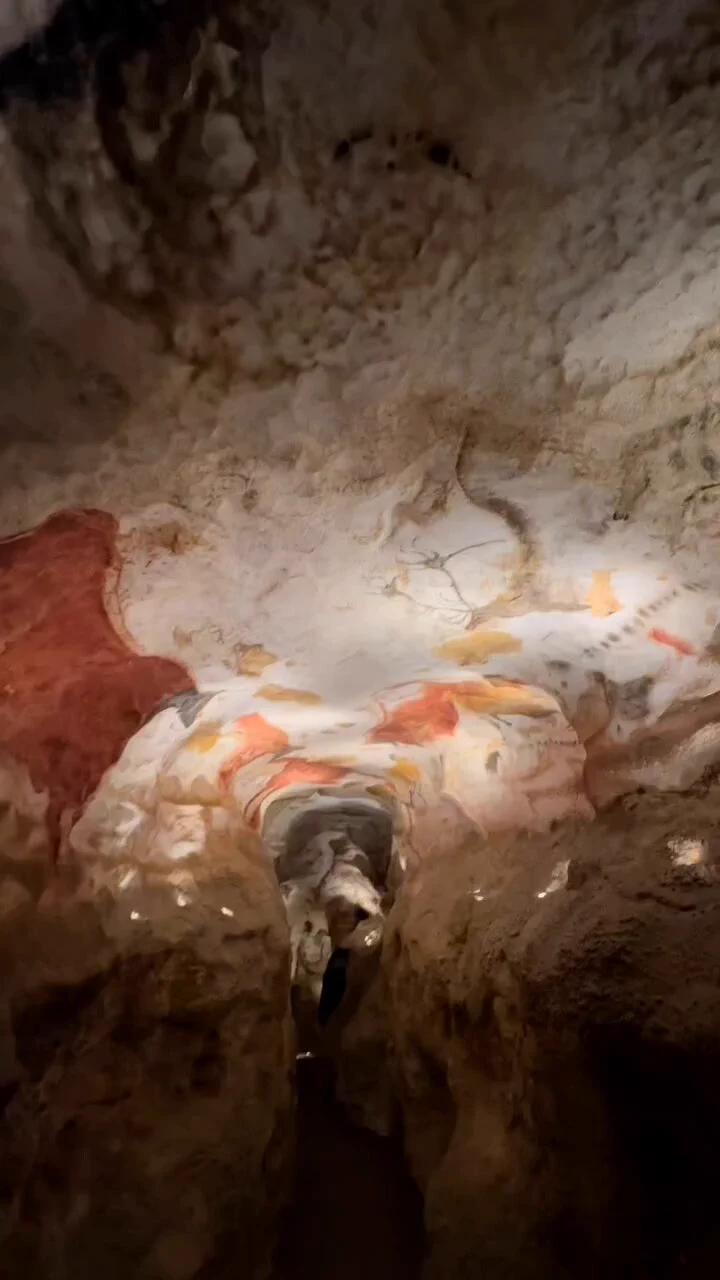Lascaux Cave - the Sistine Chapel of the Paleolithic Period : Lascaux Cave is a Palaeolithic cave situated in southwestern France, near village of Montignac in Dordogne region, which houses some of most famous examples of prehistoric cave paintings... Close to 600 paintings – mostly of animals - dot the interior walls of the cave in impressive compositions. Horses are the most numerous, but deer, aurochs, ibex, bison, and even some felines can also be found. Besides these paintings, which represent most of the major images, there are also around 1400 engravings of a similar order. The art, dated to 17000-15000 BC, falls within the Upper Palaeolithic period and was created by the clearly skilled hands of humans living in the area at that time. The region seems to be a hotspot; many beautifully decorated caves have been discovered there. Exact meaning of the paintings at Lascaux or any of the other sites is still subject to discussion, but the prevailing view attaches a ritualistic or even spiritual component to them, hinting at the sophistication of their creators. Lascaux was added to the UNESCO World Heritage Sites list in 1979, along with other prehistoric sites in its proximity. Art at Lascaux was both painted on and engraved into the uneven walls of the cave, artists working with edges and curves of the walls to enhance their compositions. Resulting impressive displays depict mainly animals, but also a significant amount of abstract symbols, and even a human. Of the animals, horses dominate the imagery, followed by deer and aurochs, and then ibex and bison. A few carnivores, such as lions and bears, are also present. The archaeological record of the area shows that the depicted animals reflect the fauna that was known to these Palaeolithic humans. The entrance of the cave leads away from the daylight and straight into the main chamber of the cave, the Hall of the Bulls. Aptly named, this space contains mostly aurochs, a now-extinct type of large cattle. In a round dance, four large bulls tower above fleeing horses and deer, the relief of the walls serving to emphasise certain parts of the paintings. The animals are shown in side-view, but with their horns turned, giving the paintings a liveliness indicative of great skill. So far, these animals are easily identifiable, but others are less clear-cut. Seemingly pregnant horse with what looks like one horn on its head. Another mysterious figure is depicted with panther skin, a deer's tail, a bison's hump, two horns and a male member. Creative minds have suggested it may be a sorcerer or wizard, but what it really represents is hard to determine. Beyond the Hall of the Bulls lies Axial Gallery, a dead-end passage, but a spectacular one at that. It has been dubbed the 'Sistine Chapel of Prehistory,' as its ceiling is home to several eye-catching compositions. Red aurochs stand with their heads forming a circle, while the main figures of Gallery stand opposite one another: a mighty black bull on one side, a female aurochs on the other, seemingly jumping onto some sort of lattice that has been drawn underneath her hooves. There are horses in many shapes, including one known as 'Chinese horse,' with its hooves depicted slightly to the back, demonstrating a use of perspective far ahead of its time. Towards the back of the passage, a horse gallops with its mane blowing in the wind while its companion falls over with legs in the air. Original cave was closed to public in 1963 CE, after it became clear that many visitors caused, among others, growth of algae on cave walls, dealing irreparable damage to the paintings. Despite closure, fungi have spread within cave, and efforts to control these issues and protect art are ongoing. Those looking for an alternative experience can visit Lascaux II, a replica of Great Hall of Bulls and Painted Gallery sections, which was opened in 1983 CE and is located a mere 200m from original cave. 🎥 : Credit to the Owner #archaeohistories#





















